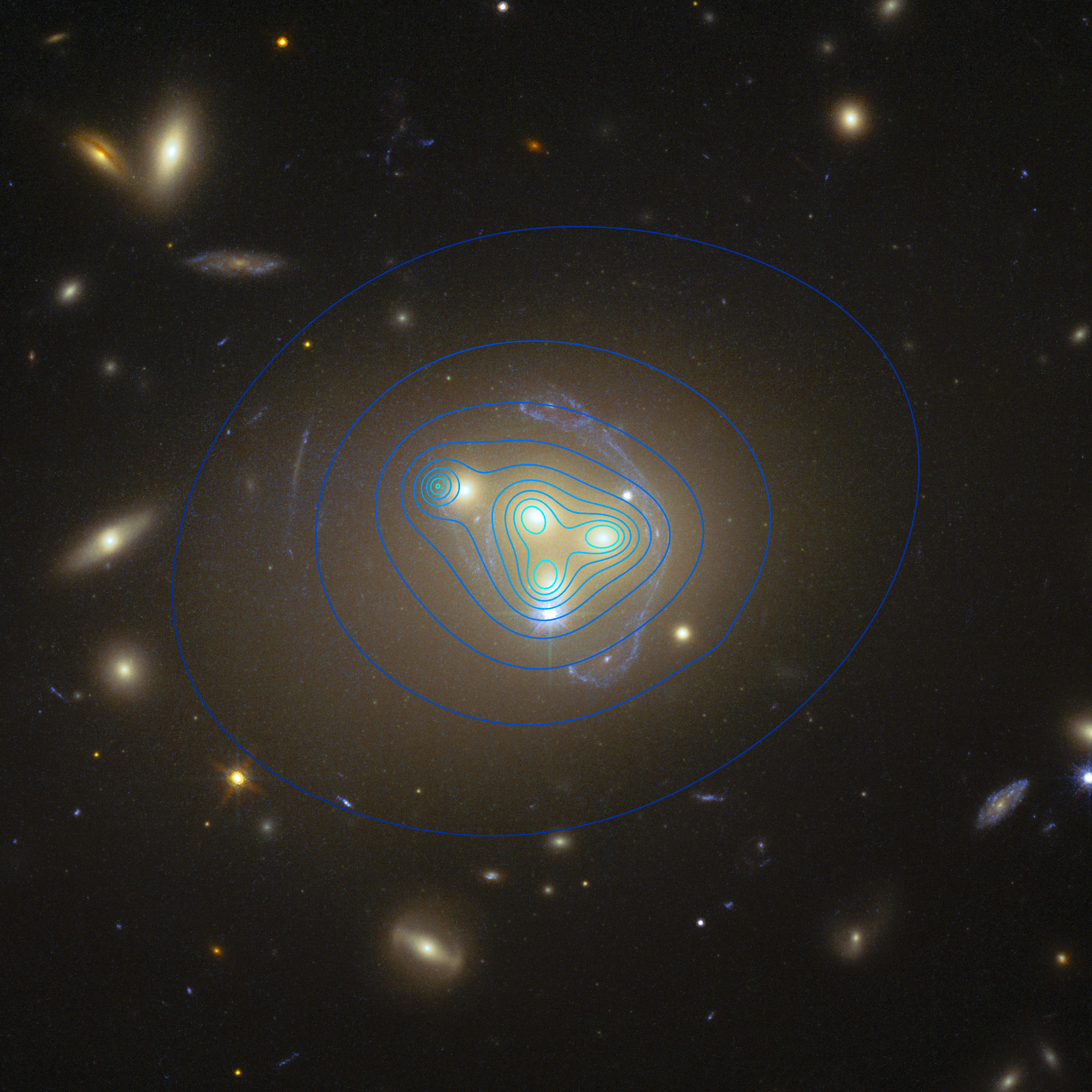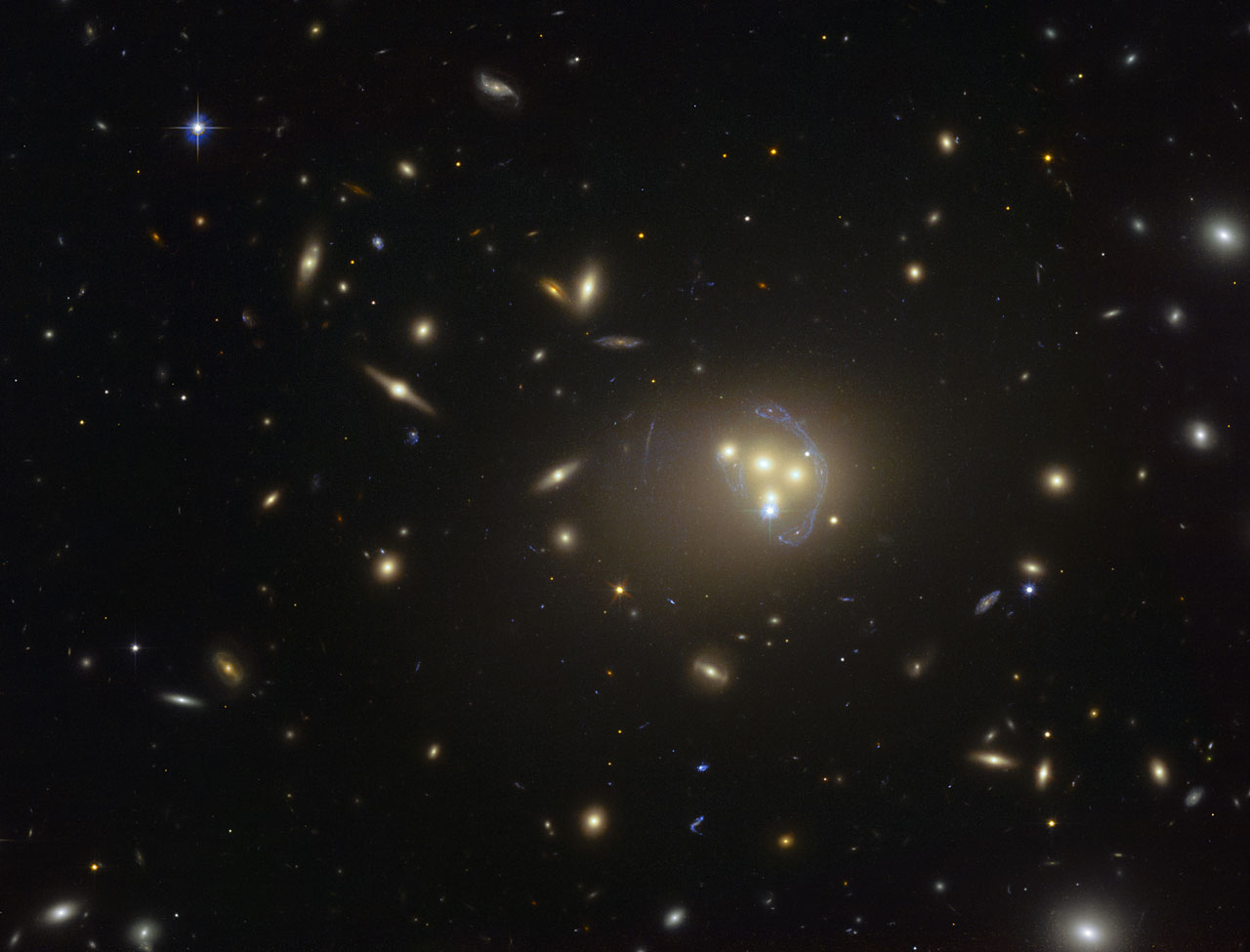Dark Matter Can Interact With Itself, Galaxy Collisions Show

It appears that dark matter — the mysterious stuff that makes up most of the matter in the universe — may be able to interact with other bits of dark matter, and not just through the pull of its gravity.
Researchers looking at four colliding galaxies discovered a discovered a clump of dark matter apparently moving more slowly than its host galaxy. This slowing-down would be expected if dark matter was interacting with separate clumps of dark matter through forces other than gravity.
"We used to think that dark matter just sits around, minding its own business, except for its gravitational pull," said lead author and astrophysicist Richard Massey at Durham University, in the United Kingdom, in a statement. "But if dark matter were being slowed down during this collision, it could be the first evidence for rich physics in the dark sector — the hidden universe all around us." [Gallery: Dark Matter Throughout the Universe]

Dark matter makes up about 85 percent of the matter in the universe, or about five times as much as regular matter — the stuff we see in everyday life. But it does not emit, reflect or absorb light, which makes it virtually invisible to astronomers.
Because dark matter is constructed differently than normal matter, astronomers can track it only through its gravitational effects on stars and galaxies. For example, dark matter is often detected through a phenomenon called gravitational lensing, which happens when the gravity of a massive object (like dark matter) distorts the light of an object behind it.

If confirmed, the new finding would mark the first time that dark matter has been detected interacting with itself via forces other than gravity. The scientists cautioned, however, that more collisions will need to be observed and further computer simulations performed to confirm the finding.
Researchers made the discovery while examining galaxy cluster Abell 3827, using an instrument on the European Southern Observatory's Very Large Telescope, as well images from the Hubble Space Telescope.
Get the Space.com Newsletter
Breaking space news, the latest updates on rocket launches, skywatching events and more!
The same research team recently published another study where they looked at 72 collisions between galaxy clusters, and saw very little interaction between dark matter clumps. In this new study, however, the scientists were looking at individual galaxies instead of entire clusters. The galaxy collisions observed in the new study may have lasted longer than the cluster collisions observed in the previous study, making it possible for the scientists to observe the non-gravitational dark matter interactions.
The new research was published in the Monthly Notices of the Royal Astronomical Society.
Follow Elizabeth Howell @howellspace, or Space.com @Spacedotcom. We're also on Facebook and Google+. Original article on Space.com.
Join our Space Forums to keep talking space on the latest missions, night sky and more! And if you have a news tip, correction or comment, let us know at: community@space.com.

Elizabeth Howell (she/her), Ph.D., was a staff writer in the spaceflight channel between 2022 and 2024 specializing in Canadian space news. She was contributing writer for Space.com for 10 years from 2012 to 2024. Elizabeth's reporting includes multiple exclusives with the White House, leading world coverage about a lost-and-found space tomato on the International Space Station, witnessing five human spaceflight launches on two continents, flying parabolic, working inside a spacesuit, and participating in a simulated Mars mission. Her latest book, "Why Am I Taller?" (ECW Press, 2022) is co-written with astronaut Dave Williams.









